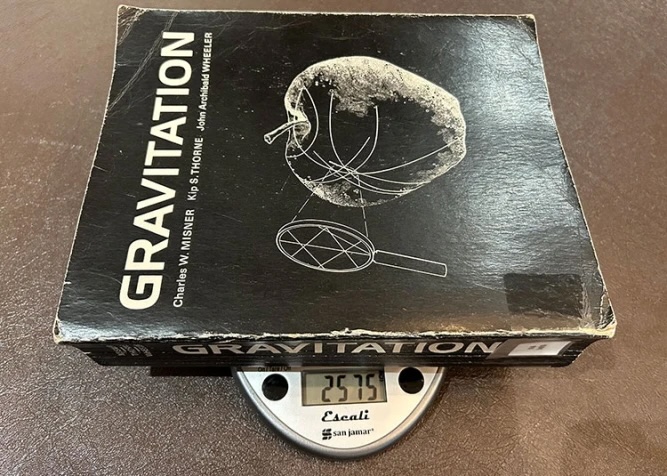
In 1974, my roommate and classmate Jeff Harvey came home in a highly excited state. He had just purchased the recently published book, “Gravitation”. It was unusual for a reference or textbook —not just because it was a paperback, but also because it was immense. It had large pages and it had a lot of them: over a thousand. And each seemed to have sidebars, notes, and explanatory boxes or illustrations to augment the text, which itself was written in a distinctly non-textbookish, conversational style.
We had both taken courses in special relativity, but general relativity, which explains gravity, was an advanced topic. And Jeff was eager to dive into it. He set himself a goal of digesting some portion of this massive book every day.
The authors of the book were unknown to me at the time but they would become familiar names as I continued my physics education. Charles Misner, Kip Thorne, and John Wheeler, were collectively referred to as “MTW”, which became the moniker to brand this monumental work.
Misner and Thorne were students of legendary physicist John Archibald Wheeler. Wheeler’s distinctive style can be inferred from his coining of popular words and expressions such as “black hole,” “quantum foam,” “wormhole,” and “it from bit” (existence from information).
Misner had a distinguished career in general relativity and cosmology, and Thorne, in addition to popularizing black holes and time warps, spearheaded the effort to build gravitational wave detectors, LIGO, for which he received the Nobel Prize in physics in 2017.
I have encountered these names off and on over the years as my interests have followed the remarkable science yielded by space telescopes, particle accelerators, and gravity wave detectors. I marvel at the things we have learned in my lifetime.
My career was initiated and informed by my study of physics, but veered in other directions. My roommate Jeff, on the other hand, completed his goal of reading and understanding the book Gravitation, and went on to become a noted physicist in his own right, making contributions to string theory and teaching relativity to the next generations of physics students at the University of Chicago.
I was motivated to describe this old memory of Jeff’s enthusiasm for a textbook because Kip Thorne will be the featured speaker at the Misel Family Lecture at the University of Minnesota later this month. I will be thrilled to hear from one of my physics heroes as he describes the fascinating things he has explored in his career.
Had I had Jeff’s fortitude to digest Gravitation, perhaps I would not remain puzzled over the twins paradox. Even now, it seems I just keep mulling it over, and making this post caused me to add some more to my commentary. Well, since the book is still in publication, maybe it is not too late!


Very good. You got farther in physics than I did.
Always nice to have something more to reach for.
I still have my copy. I have also heard it called Misery, Trouble and Woe.
I certainly didn’t get through the whole book as an undergraduate, but did have the pleasure of taking GR from Kip Thorne at Caltech.